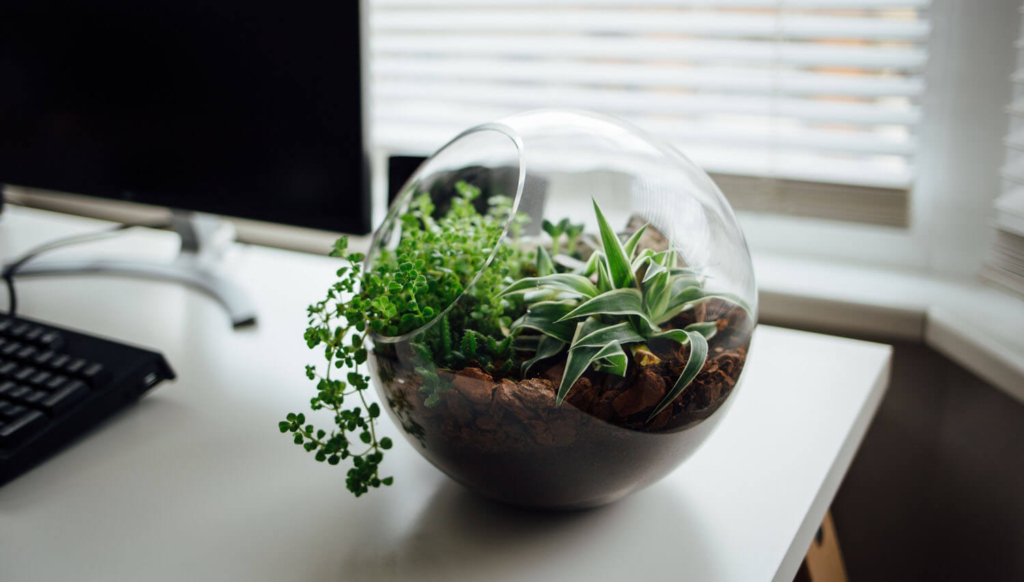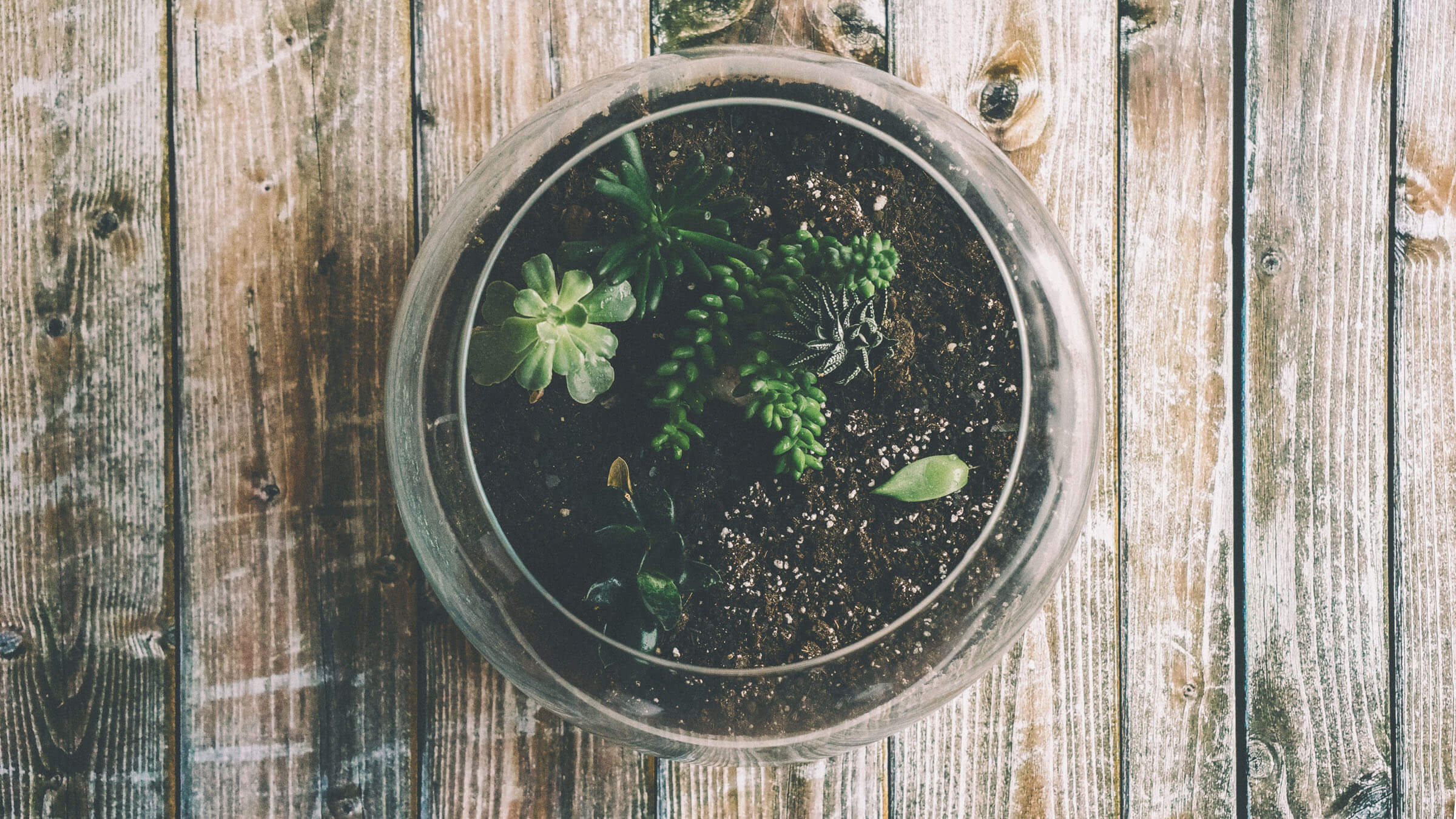Do you crave a garden, but lack the space? Do you love plants, but don’t have the green thumb to keep them alive? Do you want to inject a bit of green into a drab office space or put a smile on a friend’s face with a living gift? Do you admire the succulent trend, but aren’t willing to spend a fortune on an artistically curated plant arrangement?
If the answer to any of the above is an enthusiastic “yes”, then you may be in the market for a homemade terrarium. Creating a miniature ecosystem requires minimal space, few resources and little time, but the result will have a big impact.
Why build a terrarium?
Plants liven up any indoor space, they clean the air and brighten your mood, especially in the winter months. For kids, a terrarium is a great way to learn about nature, ecosystems and gardening.

Which type of terrarium should you build?
A terrarium is a type of vivarium, a category that also includes the aquarium. However, there are many varieties in between the entirely dry terrarium and the water-filled aquarium. An aquaterrarium can be any kind of enclosed plant world featuring some amount of water (Latin: aqua) and some amount of earth/land (Latin: terra). Many are based on and named after the Latin words for ecosystems found in nature; for example, a paludarium mimics a swamp, a riparium a lake shore, and a rivarium a riverside. Other terrariums try to replicate the habitat provided by a forest, rain forest, desert or savannah. If you are planning to house pets in a terrarium, you need to make sure it comes as close as possible to their natural habitat. Check with a pet shop before you start.
What do you need to build a terrarium?
You can build a terrarium almost entirely out of reused materials, or you can buy the required bits and pieces. Start with the container that will house your ecosystem. It can be as small as an empty jam jar or as large as you like. Old vases or bowls make great terrariums, as do discarded TVs or leaky aquariums. The “terra” part of your terrarium depends on the type of plants you want to grow, and can range from collected rocks, pebbles and sand to potting soil or compost. Activated charcoal keeps your terrarium clean, but it’s only a must if you are creating a completely closed ecosystem. Beach debris, small trinkets, old toys and upcycled rubbish can all be added as decorative touches. You can make a terrarium using only your own two hands, but a pair of gloves and some garden tools may make things easier.
What plants will you grow in your terrarium?
In theory, anything goes, but keep in mind that the types of plant you choose should be able to thrive in the ecosystem you create, that they shouldn’t grow too large for the container, and that there are limits to root growth. Your local gardening centre or florist should be able to provide advice on suitable plants.
How to build your terrarium?
Once you have all your materials and chosen your plants, start filling your container in layers. First, create a drainage layer. Depending on the size of your container, the plants you have chosen and the type of terrarium you are creating, the thickness will vary, but you definitely want at least a thin layer of rocks, stones and pebbles where excess water can go to prevent drowning the roots. The activated charcoal goes on top, followed by soil.
How to plant your terrarium?
Dig holes large enough to fit your plants. If your terrarium is housed in an empty mason jar or old wine glass, a teaspoon or the end of a pencil will suffice, but if you are planting a larger terrarium, a spade will come in handy. Try to create an interesting layout, setting plants in clusters of varying heights and sizes and leaving spaces where you can add decorative elements as a finishing touch. Much like a real landscape, this miniature version will be the most pleasing if it offers some variety and allows the eye to travel.
How to care for your terrarium?
Once you’ve planted and decorated your terrarium, find the right spot for it, depending on the heat and light requirements of the plants inside. Monitor the water levels and the health of your plants very closely at the beginning, until you’ve found the exact right balance. As there is no drainage, you will probably need less water than you think, so add small splashes regularly, rather than flooding the entire terrarium. If you’ve chosen succulents or cacti, a small spritz of water once a week should suffice – and you’ll have a thriving miniature ecosystem that will brighten your home for years, no green thumb required. #staysafe #stayathome #selfisolation



















